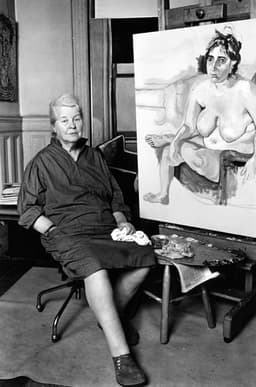
Alice Neel
@alice-neel
Alice Neel: Painter of the Human Soul
Alice Neel was an American painter who lived from 1900 to 1984, creating a powerful body of work that challenged artistic conventions and championed social consciousness through portraiture. Born in Merion Square, Pennsylvania, Neel emerged as one of the twentieth century's most distinctive and socially committed artists, earning recognition as a visionary expressionist whose work bridged the gap between modernism and social realism.
Neel's artistic practice was deeply rooted in anarchist ideology and a profound commitment to depicting the lives of ordinary people. While many of her contemporaries pursued abstraction and formalism, she remained devoted to figurative painting, particularly portraiture. Her bold expressionist style combined crude, gestural brushwork with penetrating psychological insight, creating paintings that felt both raw and intimate. She painted workers, intellectuals, children, and society figures with equal dedication, believing that every human subject deserved artistic attention and dignity.
Among her most celebrated works are her portraits of literary and artistic figures like Andy Warhol and Bella Abzug, alongside intimate family paintings and depictions of working-class New Yorkers. Her series of nude paintings, particularly self-portraits, challenged conventional beauty standards and female representation in art history. These works demonstrated her fearless approach to the human form and her rejection of sentimentality.
Neel's legacy experienced a remarkable renaissance during the feminist art movement of the 1970s, when critics and curators recognized her as a pioneering voice who had been systematically overlooked. She received major retrospectives later in life, finally achieving the institutional recognition that had eluded her for decades. Today, Alice Neel is celebrated as a revolutionary artist whose compassionate, unflinching vision fundamentally redefined American portraiture and demonstrated that social commitment and artistic excellence were not mutually exclusive.